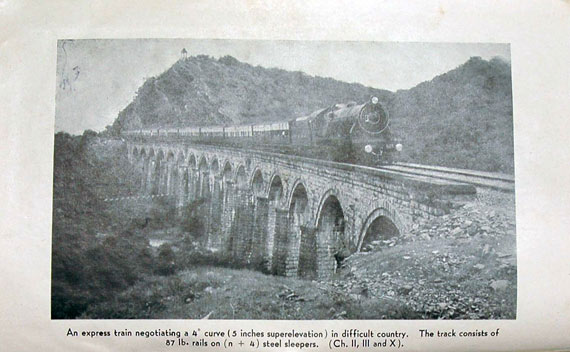Cabinet 12: Technical Aspects of Railroads

K. F. Antia, Railway Track. Design, Construction, Maintenance, and Renewal of Permanent Way. Bombay: New Book Company, 1945.
The rail gauge is the distance between the inner sides of the heads of the two parallel rails that make up a single railway line. The Gauge Act (1846) standardised gauges in Britain to 4ft 81/2 (1,435 mm), excepting for Brunel’s Great Western Railway, which continued with the broad 7ft 01/4 in (2,140 mm). The standard (or narrow) gauge was cheaper to construct, although it carried less tonnage; the broad gauge offered greater stability and great speed capacity. Importantly, when two different gauges meet (like the broad gauge of the Russian portion of the Trans-Mongolian Rail versus the Chinese standard) there is a ‘break of gauge’, which adds cost and inconvenience to traffic that passes from one system to another. India, where this book was published, opted for broad gauge.

